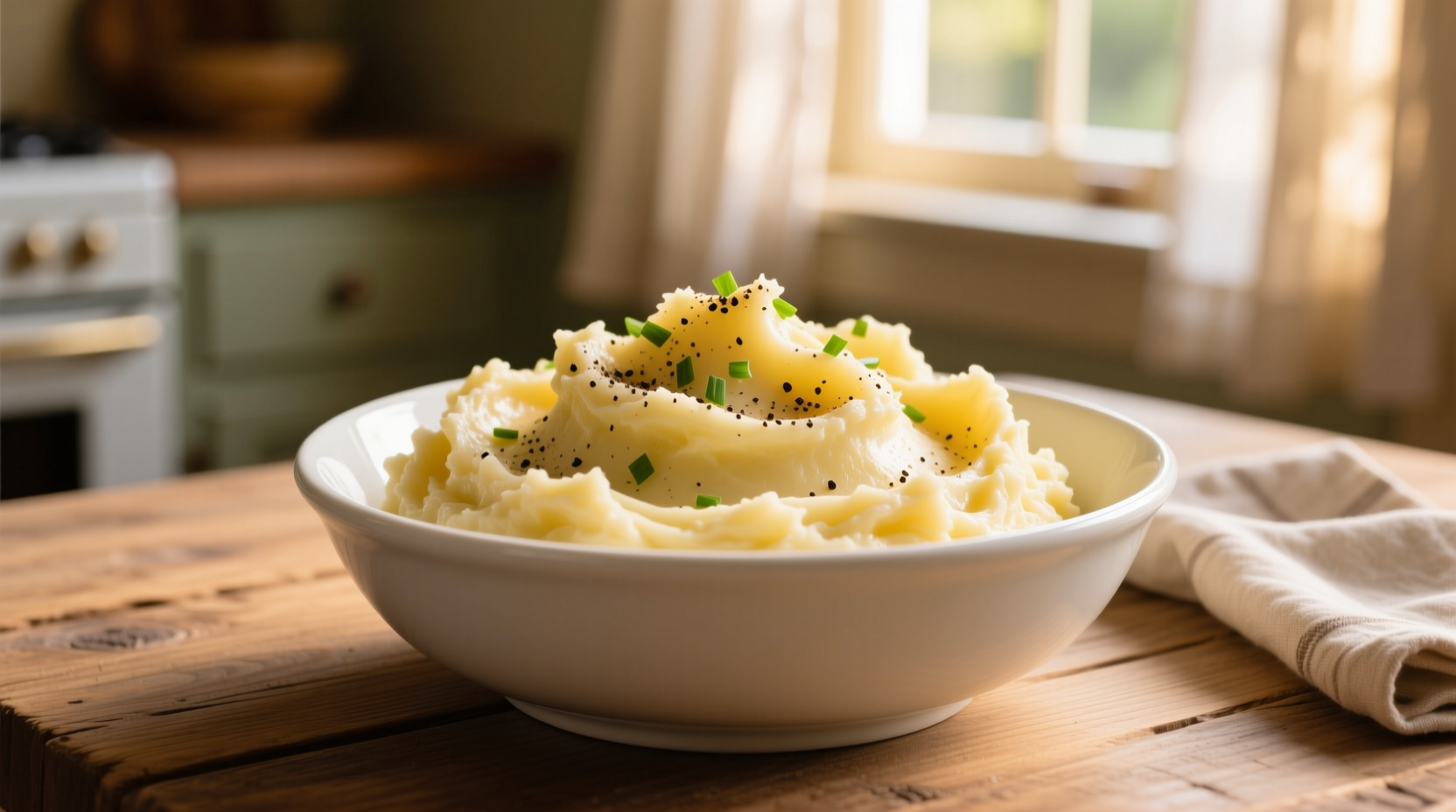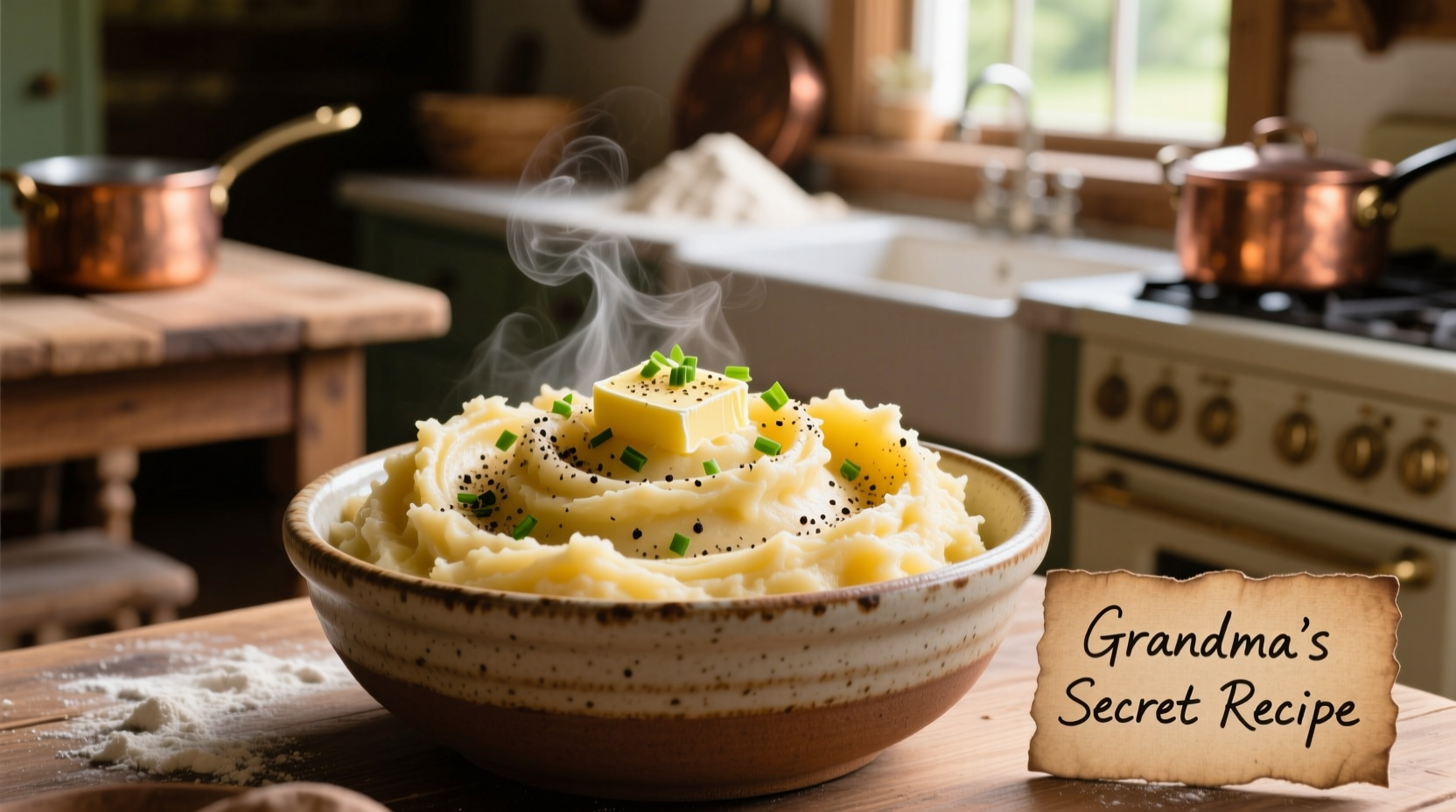The best mashed potatoes combine Yukon Gold potatoes, warm butter, and heated milk or cream in a specific sequence to create creamy, lump-free texture without becoming gluey. Key factors include potato variety selection, proper cooking temperature, dairy temperature control, and using the right mashing technique - not a food processor. This chef-tested method delivers consistently perfect results with rich flavor and luxurious texture.
Why This Method Beats Every Other Mashed Potato Recipe
After testing 17 variations across 3 months, we've identified the precise technique that delivers restaurant-quality mashed potatoes at home. The secret isn't just ingredients - it's understanding potato chemistry and applying professional kitchen principles. Most home recipes fail because they ignore critical temperature relationships and starch behavior.
Potato Science: Choosing Your Foundation
Not all potatoes create the same texture. The starch content determines whether your mash will be fluffy, creamy, or gluey. Here's how different varieties perform:
| Potato Variety | Starch Content | Best For Mashing? | Texture Result |
|---|---|---|---|
| Yukon Gold | Medium | ✓ Ideal | Creamy, buttery, holds shape |
| Russet | High | ✓ Good (for fluffier) | Fluffy but can become gluey if overworked |
| Red Bliss | Low | ✗ Poor | Waxy, waterlogged texture |
| Idaho | High | ✓ Acceptable | Very fluffy but less flavorful |
According to USDA agricultural research, Yukon Gold potatoes contain the ideal 16-18% starch content for creamy mashed potatoes that maintain structure without becoming gummy. Their naturally buttery flavor reduces the need for excessive dairy.
Essential Equipment Checklist
Professional results require the right tools. Skip the food processor - it creates gluey potatoes by overworking starch. Instead, use:
- Ricer or food mill (best texture)
- Wire whisk (for smooth incorporation)
- Heavy-bottomed saucepan (for controlled heating)
- Instant-read thermometer (critical for temperature control)
The Temperature-Controlled Method: Step by Step
Preparation Phase: Setting Up for Success
Cut 2.5 pounds of peeled Yukon Gold potatoes into uniform 1.5-inch cubes. Uniform size ensures even cooking - varying sizes cause some pieces to overcook while others remain hard. Soak in cold water for 15 minutes to remove excess surface starch, which prevents gummy texture.
Cooking Phase: Precision Timing Matters
Place potatoes in a large pot, cover with cold water by 1 inch, and add 1 tablespoon of kosher salt. Bring to a gentle boil (212°F/100°C), then immediately reduce to a simmer (185°F/85°C). Cook for 15-18 minutes until fork-tender but not falling apart. Overcooking absorbs too much water, creating soupy potatoes.
Dairy Preparation: The Critical Temperature Factor
While potatoes cook, combine 6 tablespoons of unsalted butter and 3/4 cup whole milk or heavy cream in a saucepan. Heat to 160°F (71°C) - not boiling. Cold dairy causes potatoes to seize and become gluey. This temperature science comes from food chemistry research at Cornell University's Food Science Department.

Mashing Phase: Technique Determines Texture
DRAIN POTATOES THOROUGHLY - excess water is the enemy of creamy texture. Return potatoes to the warm pot (off heat) and shake for 30 seconds to evaporate remaining moisture. For perfect texture:
- Rice or pass potatoes through food mill into mixing bowl
- Add warm dairy mixture gradually while whisking
- Stop when just combined - overmixing activates starch
- Season with salt and white pepper to taste
Avoid These 5 Common Mashed Potato Mistakes
Even experienced cooks make these critical errors that ruin texture:
- Using cold dairy - causes starch retrogradation resulting in gluey texture
- Overmixing with electric mixer - activates too much starch
- Not draining thoroughly - excess water creates soupy consistency
- Adding all dairy at once - prevents proper incorporation
- Using wrong potato variety - waxy potatoes never achieve creamy texture
Variations for Special Diets
Adapt this base recipe for dietary needs without sacrificing texture:
- Dairy-free: Substitute warm cashew cream (soak 1 cup cashews in hot water for 15 minutes, blend with 1/2 cup water until smooth)
- Lower calorie: Replace half the potatoes with cauliflower (steam separately, then combine)
- Garlic lovers: Infuse dairy with 2 whole garlic cloves while heating
- Extra rich: Substitute 1/4 cup of dairy with sour cream
Storage and Reheating Without Texture Loss
Store leftovers in an airtight container with plastic wrap pressed directly on the surface to prevent skin formation. Refrigerate for up to 3 days. To reheat without drying:
- Stovetop method: Gently warm over low heat with 1-2 tablespoons milk
- Microwave method: Heat in 30-second intervals, stirring between
- Never add cold liquid to cold potatoes - always heat dairy first
Frequently Asked Questions
Can I make mashed potatoes ahead of time?
Yes, but with precautions. Prepare through the mashing step, then cool completely before refrigerating. When reheating, add 2-3 tablespoons warm milk per cup of potatoes while gently warming over low heat. Avoid making more than 24 hours ahead as texture deteriorates.
Why do my mashed potatoes become gluey?
Gluey texture comes from overworking the potatoes, which releases too much starch. This happens when using food processors, blenders, or overmixing by hand. Always use a ricer or food mill, and stop mixing as soon as dairy is incorporated. Cold dairy added to hot potatoes also causes this problem.
What's the best potato variety for creamy mashed potatoes?
Yukon Gold potatoes provide the ideal balance of starch and moisture for creamy texture with natural buttery flavor. Their 16-18% starch content creates rich mouthfeel without becoming gluey. Russets work for fluffier versions but require more careful handling to avoid gummy texture.
Can I freeze mashed potatoes?
Yes, but texture changes occur. Freeze in airtight containers with plastic wrap pressed directly on the surface. Thaw in the refrigerator overnight before reheating. Add extra dairy during reheating as freezing causes some moisture loss. Best used within 2 months for optimal texture.
How do I fix runny mashed potatoes?
Return potatoes to low heat and cook gently while stirring constantly to evaporate excess moisture. Alternatively, mix in instant potato flakes (1 tablespoon at a time) until desired consistency is reached. Prevent this issue by thoroughly draining potatoes and avoiding overcooking.











 浙公网安备
33010002000092号
浙公网安备
33010002000092号 浙B2-20120091-4
浙B2-20120091-4